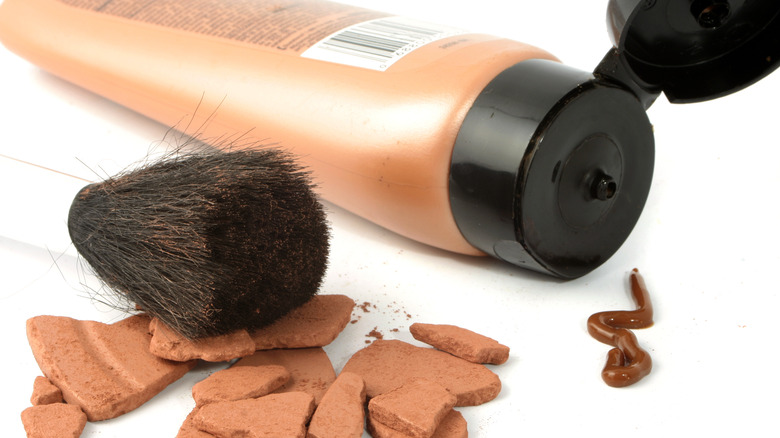What You Should Know Before Using Self Tanner On Your Skin
We all know that tanning your skin in the sun is bad news, but what about self-tanning? Surely compared to the risks associated with the sun, self-tanner and tanning lotions are harmless, right? "In order to get a natural tan from ultraviolet light, your skin has to be injured," Dr. Darrell Rigel, a clinical professor of dermatology at New York University told TIME. In comparison, self-tanner only stains the outer layer of your skin.
Though the safety of dihydroxyacetone (DHA), the ingredient in self-tanners that causes the stain, has been questioned by experts in the past, Rigel is positive that DHA is harmless. The only risk that comes with using self-tanner on your body is an allergic reaction. Dr. Reynold Panettieri, a professor of pulmonary medicine at the University of Pennsylvania, agrees, adding, "Based on what we know today, DHA is really pretty safe when applied to the skin correctly."
How to apply self-tanner correctly
The American Academy of Dermatology (AAD) outlines the correct method for applying self-tanner on their website. They point out the importance of exfoliating and drying skin thoroughly prior to applying any kind of tanning lotion, which helps ensure it goes on evenly. Recommending that you apply the self-tanner in sections and massage in a circular motion, they also note that you should wash your hands regularly during application to avoid orange palms.
It's important to spend time blending the tanner at your wrists, knees, and ankles for a natural look, diluting with a thin layer of moisturizer. The AAD also lists drying time, adding you should avoid exercise or anything that may make you sweat for at least three hours. Finally, you need to remember that self-tanner does not protect you from the sun and you need to protect your skin with SPF just as you would when not wearing self-tanner.

